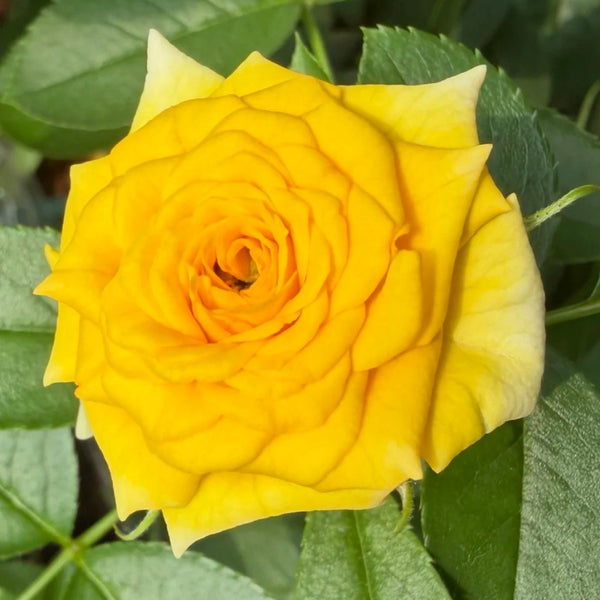Choosing the Right Rose Rootstocks for Central Florida
This article explores the general aspects of three common rose rootstocks used in Central Florida, not from a scientific standpoint, but in a way that helps gardeners understand how rootstocks affect rose growth. We aim to explain which rootstock is most beneficial for rose growth, why grafting to different rootstocks can lead to healthier plants, and how it can result in better blooms.
As rose enthusiasts, we’ve always wanted to share our knowledge of successful rose planting. I vividly recall attending early rose society meetings and hearing unfamiliar terms like “grafted,” “rootstock,” “Fortuniana,” and “own-root.” It wasn’t until I invited two rose experts to my garden for advice that I gathered the courage to ask, “What exactly does ‘own-root’ mean?”
The Importance of Rose Root Systems

The root system is crucial to the overall health and performance of a rose bush. Proper watering, fertilizing, lighting, and pest control are vital, but the rootstock often plays the most decisive role in determining a rose's success or failure.
Rose roots serve three main purposes: supporting the plant, absorbing water and nutrients, and storing vital resources during dormancy or drought. The size of the root system typically determines the plant's size: smaller roots lead to smaller plants, while larger roots foster more robust growth.
When planting roses, we aim for well-drained, loose soil that allows the roots to spread freely. A dense medium can hinder root development, weakening the plant. We call this soil "friable," meaning it is loose and easy to break apart.
What is Grafting in Roses?
Grafting involves attaching a desired rose variety (the scion) to a rootstock with stronger characteristics. This allows us to enjoy the best features of both the rootstock and scion. For example, if a rose variety is not hardy or struggles to thrive on its own roots, grafting it onto a more resilient rootstock can improve its performance.
Fortuniana Rootstock
Fortuniana is a popular rootstock in Florida and other humid, warm regions, often grafted onto rose varieties for robust growth and abundant blooms. It is known for its large, vigorous root system that can exceed 10 inches (25 cm) in depth. However, there are some considerations:
-
Pros:
- Creates a large root system, supporting vigorous plant growth.
- Known to be resistant to root-knot nematodes, which are common in Florida’s sandy soil.
- Longer lifespan than other rootstocks, sometimes up to 40 years or more.
- It is evergreen, meaning it does not need a dormant period.
-
Cons:
- The shallow root system requires staking for support.
- Can be more expensive due to limited availability and high grafting costs.
- Susceptible to cold damage, especially in rare low-temperature events.
- Root suckers can emerge, requiring removal to prevent them from overpowering the grafted rose.
Dr. Huey Rootstock
Dr. Huey is another commonly used rootstock, known for its deep, sturdy root system. This rootstock is favored for its ability to produce compact, well-structured plants that perform well in Central Florida’s climate. Dr. Huey is often chosen for roses that require a hardier rootstock.
-
Pros:
- Deep-rooted, allowing for excellent drought tolerance and stability.
- Easier to manage than Fortuniana, requiring no staking.
- More resistant to nematodes when paired with good soil care and organic material.
-
Cons:
- Less tolerant of extreme cold than Fortuniana.
- Root suckers can be problematic if not controlled.
Own-Root Roses
Own-root roses are not grafted onto any rootstock; they grow from cuttings or their own roots. Over time, the popularity of own-root roses has increased, especially as many rose growers find them easier to propagate. These roses rely solely on their own roots for growth and nutrition.
-
Pros:
- Typically more affordable than grafted roses.
- Can grow well in a variety of climates and soil types.
- Roots are genetically identical to the plant, which can lead to more consistent growth.
- Own-root roses can survive cold damage and regenerate from their roots if necessary.
-
Cons:
- Own-root roses may have smaller root systems, which can limit their size and longevity.
- Some varieties do not perform well on their own roots, especially hybrid tea roses.
- In areas with nematode infestations, own-root roses can struggle more than grafted varieties.
Conclusion
Choosing the right rootstock for your roses is essential for success in Central Florida. Fortuniana rootstock is excellent for tropical conditions and nematode resistance, but it requires careful management. Dr. Huey offers strong performance and deep roots, making it suitable for most garden types. However, own-root roses are a growing trend, offering affordability and resilience, though they may not perform well in all conditions.
For Florida growers, it’s essential to consider both the rootstock and the specific rose variety you want to grow. Whether grafted or own-root, the genetics and proper care will determine your roses’ long-term success.
















































